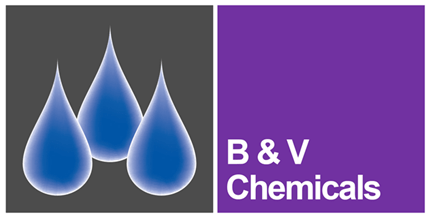In closed systems, maintaining proper glycol concentrations is essential for balancing biostability, freeze protection, and system efficiency.
Glycols such as Monoethylene Glycol (MEG) and Monopropylene Glycol (MPG) are widely used for their antifreeze properties, but their impact on microbial growth, thermal transfer, and system viscosity requires careful management.
Here, we explore how glycols can either support or inhibit microbial activity and their wider implications on system performance.
Glycol as a Biostatic Agent
When glycol concentrations are maintained between 20–25% in a closed-circuit system, they exert a biostatic effect that suppresses microbial growth, making this range optimal for inhibiting bacteria and other microbes.
At these concentrations, the glycol is not easily metabolised by bacteria, effectively preventing it from being used as a nutrient source. However, when glycol levels fall significantly below 20%, this protective effect diminishes, and bacteria may begin to thrive. As microbes metabolise glycol, they produce acidic byproducts—including glycolic, glyoxylic, formic, carbonic, and oxalic acids—that lower the system's pH. This acidic environment can accelerate corrosion, introducing risks to system components such as pipes, valves, and other equipment. Over time, these effects can compromise the integrity and longevity of the system, leading to both increased maintenance costs and potentially costly downtime. Regular monitoring of glycol levels is essential to maintain biostability and protect against corrosion-related damage.
Optimal Glycol Concentrations for System Stability
To maintain system stability, a glycol concentration of approximately 25% is often specified. This concentration offers a balanced solution, preventing microbial growth while offering freeze protection and manageable thermal and viscosity effects. Falling below 20% risks excessive microbial activity, biofilm formation, and subsequent corrosion, whereas excessive glycol levels may lead to poor heat transfer and increased energy costs.
Glycol Use in Process Chiller Applications: Impact on System Design and Operation
The use of glycol in process chiller applications plays a critical role in system performance, impacting design considerations, operational efficiency, and maintenance requirements. Understanding the fundamental effects of glycol on heat transfer, viscosity, and pumping requirements is essential for engineers and system operators. Glycol’s specific properties—including lower thermal conductivity, higher density, and increased viscosity—necessitate strategic design adjustments and operational awareness to achieve efficient, long-term performance.
Selecting Glycols and Corrosion Inhibitors
Inhibited MEG and MPG formulations are recommended to reduce the risk of corrosion associated with glycol breakdown products. The correct inhibitor dosage, combined with 25% glycol, ensures adequate corrosion protection. For systems with specific safety requirements—such as those in food processing or pharmaceutical applications—MPG USP grade is typically specified due to its low toxicity and high purity (>99.8%), making it suitable for incidental human contact.
Corrosion inhibitors in conjunction with glycol not only reduce corrosion rates but also extend the lifespan of pumps, pipes, and other system components. By maintaining a stable, non-corrosive environment, inhibitors prevent metal loss and system failures, reducing maintenance costs and prolonging system efficiency.
Summary: The Role of Glycol Concentrations in System Health
A closed system’s biostability is directly linked to glycol levels and quality. Regular monitoring and adjustments are essential to avoid glycol degradation and microbial growth. Additionally, incorporating a proper glycol-based antifreeze can prevent water in chilled systems from freezing during cold weather, enhancing system resilience.
In conclusion, glycol plays a vital role in closed systems, offering antifreeze properties while impacting biostability, thermal transfer, and viscosity. By maintaining glycol levels at or above 25%, system operators can protect against microbial growth and biofilm formation. The addition and maintenance of the correct concentration of inhibitor in conjunction with glycol will also minimise corrosion and maintain efficient thermal transfer. Regular maintenance and attention to glycol concentration and inhibitor levels are key to sustaining optimal system performance.





